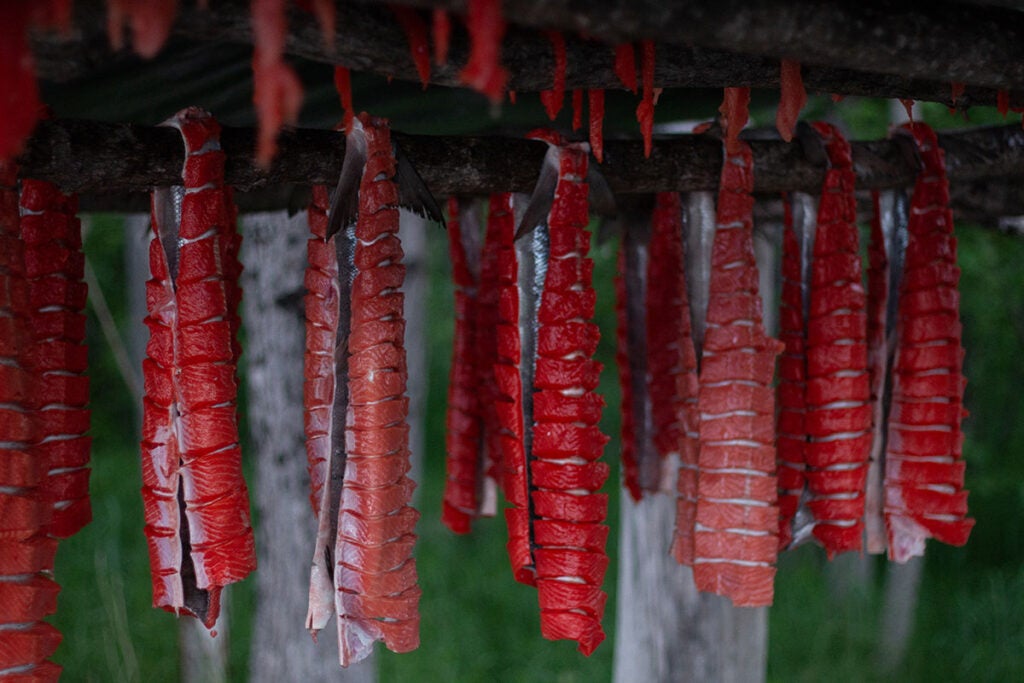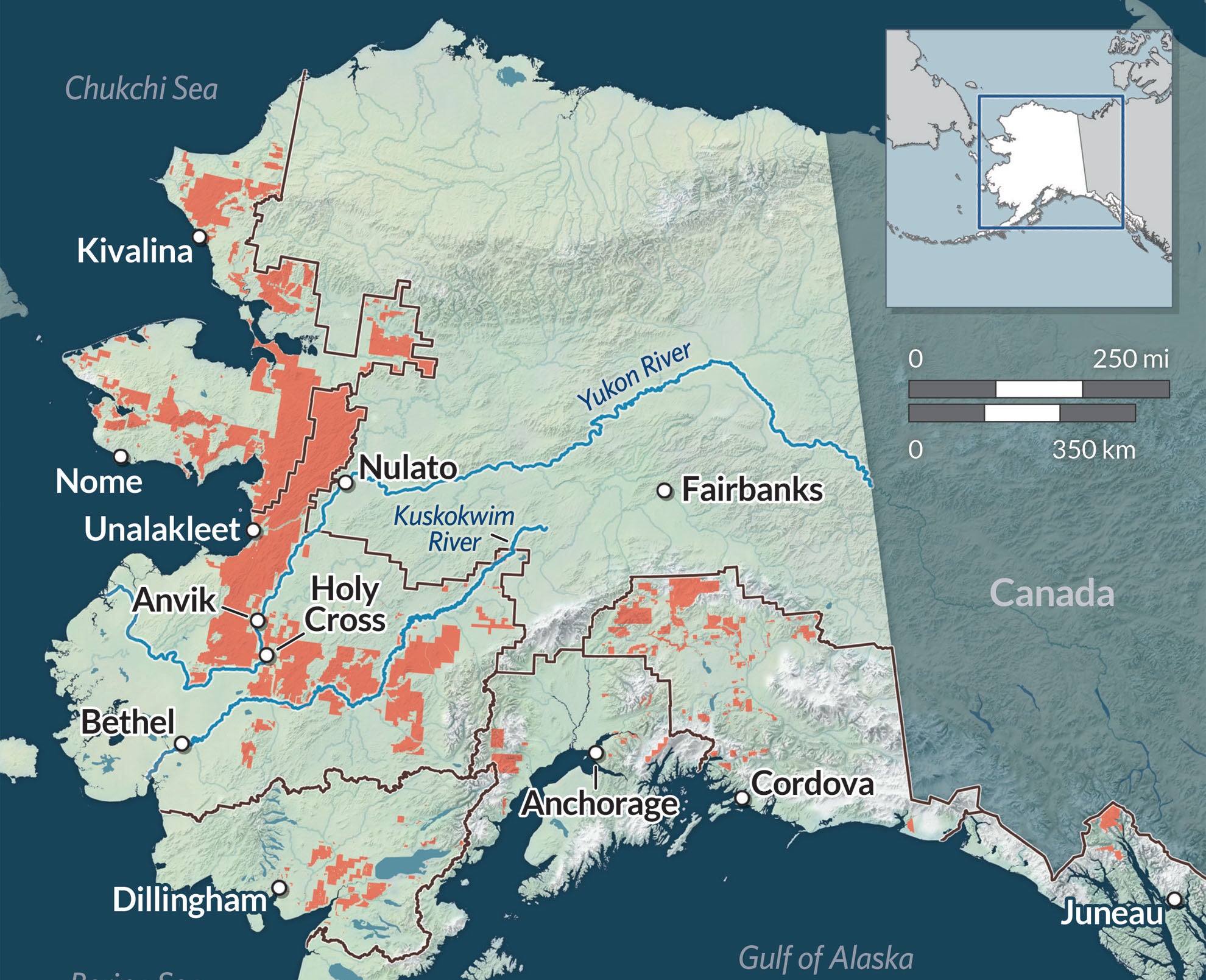Earthjustice stands with western Alaska tribes and families after severe storms devastated entire communities, displacing more than 1,000 residents just before winter. Learn more and how you can help.
Protecting 28 Million Acres of Public Lands in Alaska is a Big Victory!
Earthjustice joins Alaska’s Tribes and conservation groups in applauding the Department of Interior’s decision – and the thorough study and public process that informed it.
We’re celebrating a big win for Alaska — one that benefits fish, wildlife and plants, Tribes, and everyone who understands the value of preserving intact ecosystems.
On Tuesday, August 27, the Department of Interior (DOI) published a Record of Decision and Public Land Order reaffirming protections for 28 million acres of public lands from extractive development.
DOI’s decision ensures these critically important ecological areas — traditional lands and waters for thousands of Alaska Native people — will continue to be safeguarded against fossil fuel leasing, hard rock mining, and other extractive development.
The federally managed lands in question are known as D-1 lands because they were withdrawn from development in 1971 under Section 17 (d)(1) of the Alaska Native Claims Settlement Act (ANCSA). Under ANCSA, approximately 150 million acres of intact ecosystems across Alaska were originally withdrawn as D-1 lands and protected from development, largely because of their importance as ancestral hunting, fishing, and gathering grounds for Alaska Native people.
ANCSA protected these lands to ensure the public interest of these lands was considered, including preserving food access within these ecologically rich areas for nearby Indigenous Alaska communities.
For decades, there have been regular attempts to open these D-1 lands to industrial development, including during the previous administration when former Secretary of the Interior David Bernhardt opened approximately one million acres to mining and then tried to remove protections from another 28 million acres (the lands with recently affirmed protections).
The 28 million acres at stake are managed by the Bureau of Land Management (BLM) and crisscross the Northwest, Southwest, Southcentral, and Southeast regions of the state. They include critical habitat spanning coastal estuaries, rivers, marshes, tundra, and forests and support abundant salmon, multiple caribou herds plus muskox, bears, birds, and countless other fish, wildlife, and plant species.
Fortunately, the previous administration’s push to open these lands was not completed due to deficiencies in the process, including an inadequate environmental analysis, and a failure to fully analyze the effects to subsistence hunting and fishing.
The current administration, soon after taking office, paused five Public Land Orders that would have opened these lands for development and instead began a thorough environmental review to evaluate the consequences of lifting D-1 withdrawals on fish and wildlife habitat, subsistence hunting, fishing, and gathering, our climate, and Alaska’s people and communities.

Some D-1 lands are located within the Bristol Bay watershed. (Pat Clayton / Fish Eye Guy Photography)
These intact lands hold vital cultural, biological, and ecological values
The process of reevaluating the protective status for 28 million acres of public lands in Alaska presented the possibility of a huge loss — or a big win — for Alaska’s fish, wildlife, and people. At stake was the future of some of our state’s last, best undisturbed public lands that also underpin food sovereignty and security for Alaska Native people and communities.
Advocacy to retain these critical protections on Alaska’s D-1 lands was led by Tribes and Tribal organizations in Alaska alongside a coalition of conservation organizations including SalmonState, Wild Salmon Center, Audubon Alaska, Defenders of Wildlife, the Alaska Wilderness League, and many others.
Three Tribal organizations — Kawerak, Inc., Tanana Chiefs Conference, and the Association of Village Council Presidents — sent a powerful letter to Department of Interior Secretary Deb Haaland in December 2023 urging the BLM to maintain the existing D-1 protections. A fourth Tribal organization, the Bering Sea Interior Tribal Commission, plus 78 Alaska Tribes, had previously sent a sign-on letter similarly advocating for continued protections of these ancestral Tribal lands.
As stated in the Tribal organization letter, over 80% of the food for Alaska Native communities off the road system comes directly from the surrounding lands and waters. Keeping these valuable and productive ecosystems intact is critical to maintaining Alaska’s biodiversity and ensuring Alaska Native people can continue to carry on ways of life that have sustained Tribes and communities for millennia.
These lands also serve as a critical carbon sink and provide a buffer to our changing climate. With climate change disproportionately affecting Alaska’s rural communities, preserving intact ecosystems has become even more important to help protect against food shortages, warming temperatures, and increasing natural disasters.
Being able to fish and gather in the same places my ancestors have is irreplaceable. These intact lands provide the best chance for wildlife to adjust to our changing climate, and for future generations to be afforded this invaluable opportunity.
In total, 21,000 supporters sent an Earthjustice action alert urging the BLM to continue to protect these public lands in Alaska. Thank you to each of you who took time to learn about or weigh in on this important issue!

In the Yukon-Kuskokwim Delta, which also contains D-1 lands, salmon are caught, prepared by hand, and preserved to feed families throughout the year. (Rachel Ruston / Northern Center)
Public lands that will continue to sustain Alaska Native people and communities
After an extensive public process, in July the BLM issued a final environmental impact statement recommending that these lands should continue to be protected as D-1 withdrawals. DOI agreed and finalized continued protections on these critical lands in its Record of Decision.
These lands have sustained Alaskan communities and Alaska Native people from time immemorial and now public use of these lands will continue for generations to come.
DOI’s decision could be reversed or challenged someday in court, but this decision is durable. A future administration, if it wanted to lift these D-1 protections, would need to justify the legality of its actions. Secretary Haaland’s reinstatement of these withdrawals was backed by extensive analysis that concluded these protections are necessary to avoid harm to subsistence practices and resources that depend on intact landscapes and are in the public interest.
Earthjustice is grateful to the current administration for recognizing the importance of keeping these ancestral lands intact for important wildlife, Alaska Native people, communities, and others — and for the hard work by Tribes, conservation organizations, and supporters like you who urged the federal government to keep these critical protections in place.
Chin’an gheli and quyana cakneq! Thank you very much!
Opened in 1978, our Alaska regional office works to safeguard public lands, waters, and wildlife from destructive oil and gas drilling, mining, and logging, and to protect the region's marine and coastal ecosystems.
